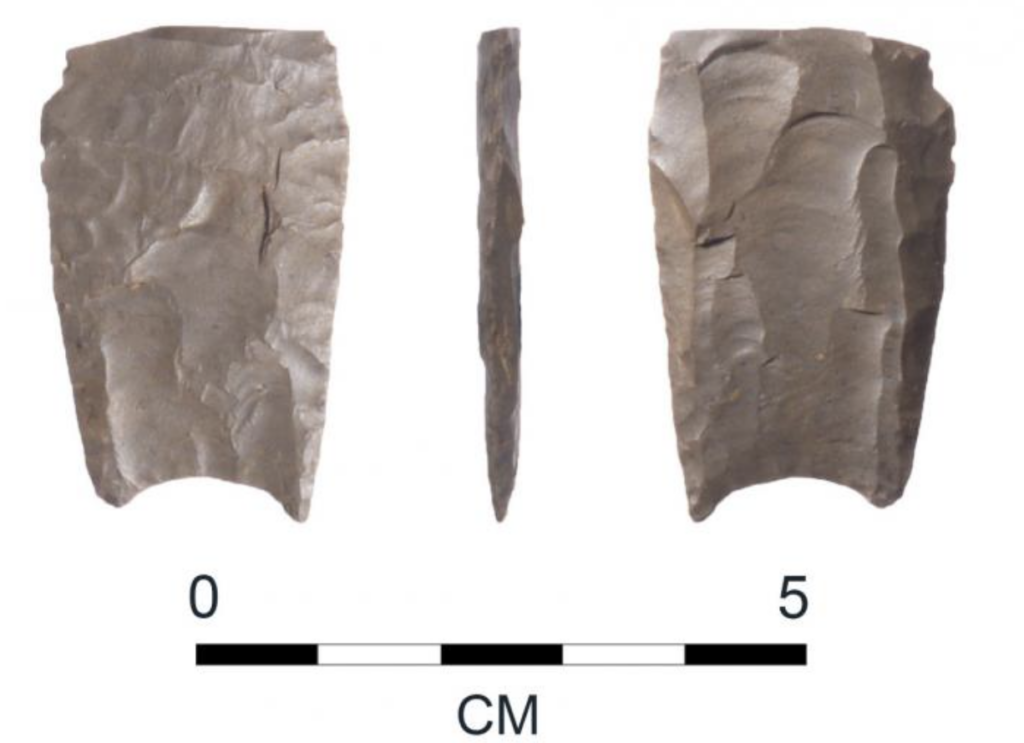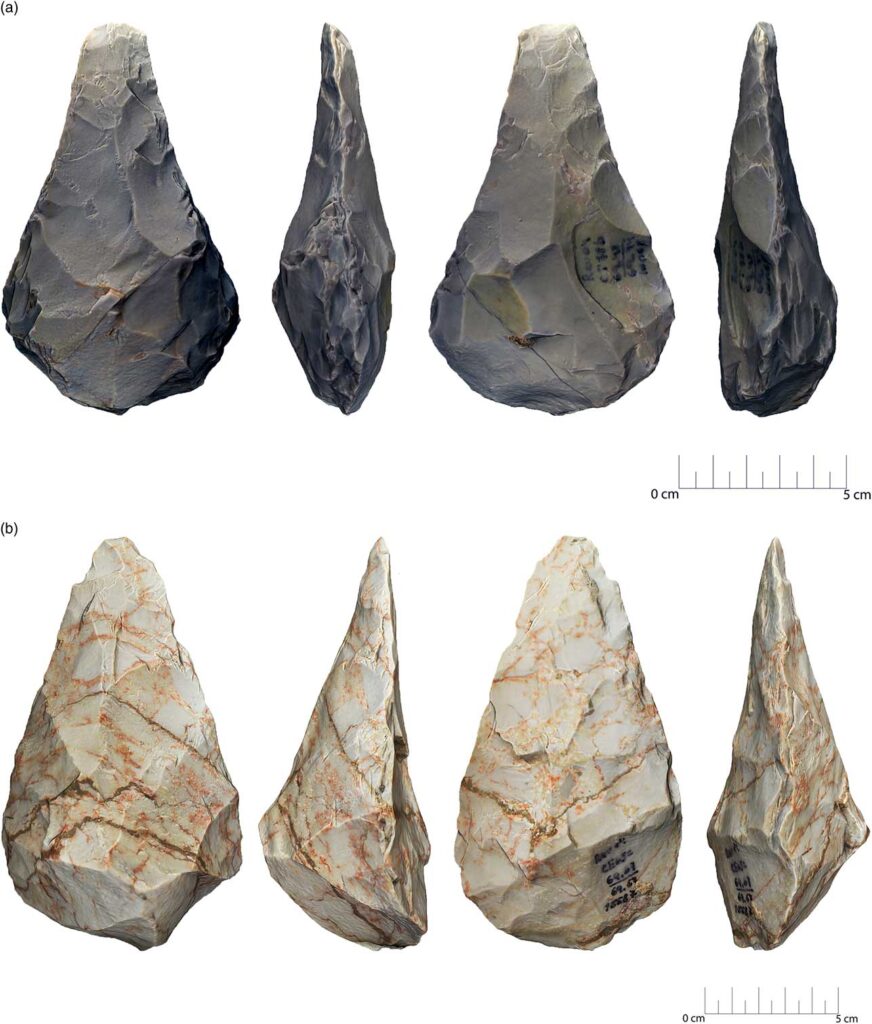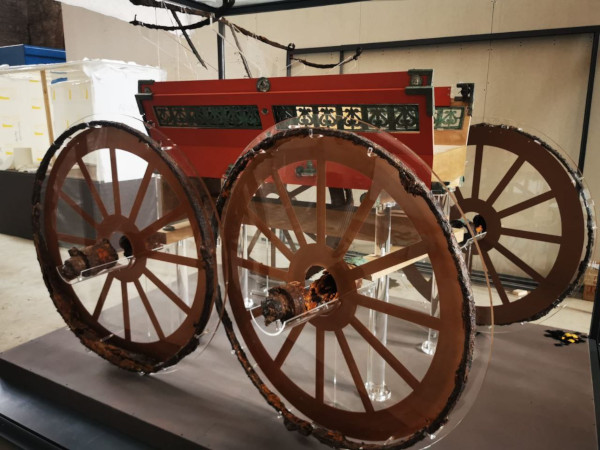By Luna Kang
On July 25, 2022, a new Crowfield fluted point was unearthed and donated to the New York State Museum. This finding was recovered from the Hudson River, Magdelen Island, in Dutchess County, New York (New York State Museum, 2022). Artifacts similar to this point are essential to the archaeological world because they allow archaeologists to date the area it was found in and possibly answer hypotheses about the people living there at the time.

These Crowfield points range in size from 40-65 mm in length and 22-35 mm in width. Points like these are typically made from flaking stone to create smaller, easy-to-work-with shards. For this point, the material that was used was Chert, a type of quartz (Hobart King, 2023). They are then sharpened and shaped utilizing both stone and antler tools. Crowfield points are biface, which means they are worked over on both sides of the point. They are also fluted down the middle to make room for attaching a handle for a spear or small knife tool. Different areas and times have various stone tools. An example of one type is the Acheulean hand axes (Meir Finkel and Ran Barkai, 2018). These axes were some of the most utilized and advanced tools of the late Pleistocene era. Although these tools were used for more everyday use, the Crowfield points are connected to them because both show a level of advancement in stone tools throughout history.

There is more to these little points than just what they’re made of and how they’re made. They can indicate when ancient people officially settled an area. Before the uncovering of this specific point, the arrival of people to the Hudson River region was estimated to be around 6,000 years ago. With this new evidence, it is now estimated to have been inhabited by indigenous peoples anywhere from the Late Ice Age period (The New York State Museum, 2022). The way these tools are dated comes from two different methods: through relative dating compared to other similar artifacts; or through radiocarbon dating. Relative dating allows archaeologists to estimate the time when an artifact existed. Since this point is made precisely like other Crowfield points, it is easy to see why archaeologists would put this one in the same group. Radiocarbon dating, however, allows scientists to know the exact date when an artifact existed. The only issue with radiocarbon dating is that it is effective until 1950. In 1950, the nuclear bomb tests drastically changed the amount of carbon in the atmosphere, preventing archaeologists from using this dating method past that date. By dating these points, archaeologists can uncover more secrets about ancient indigenous Americans.
Further Research:
Lithic Points
Archaeology in the Hudson Valley Region
Reference List:
Finkel, Meir and Ran Barkai, The Acheulean Handaxe Technological Persistence: A Case of Preferred Cultural Conservatism?, March 26, 2018: https://www.cambridge.org/core/journals/proceedings-of-the-prehistoric-society/article/acheulean-handaxe-technological-persistence-a-case-of-preferred-cultural-conservatism/EB98AE73E58D675A8C8C404136BBDB3C
King, Hobart, Chert: What is it? Where is it from? What is it used for?, 2023: https://geology.com/rocks/chert.shtml
New York State Museum, Science Tuesday: Late Ice Age Stone Point, July 25, 2022: https://www.nysm.nysed.gov/research-collections/archaeology/native-american-archaeology/news
Ontario Archaeology Society: London Chapter, Crowfield Points, 2023: https://oaslondonchapter.ca/southwestern-ontario-projectile-points/


